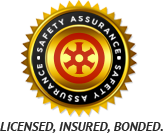Each and every student needs to practice driving as much as they can, at least 60 hours or more, before they attempt their first road test. Secondly, they need to go to a driving school that will solidify the foundation of their driving, and take at least two or three lessons.
If a proper foundation is developed, the student will be able to scan, shoulder check, turn properly, etc. without any effort. Driving as a whole is a motor skill. Each and every person is gifted with this skill and if it is developed properly to begin with, the student will enjoy the experience of driving throughout his or her life.
If a student can, they should resist their parents taking them on their first lesson. The reason being is the parents will pass on their own driving habits to their kids and if their minds don’t cope as quickly as expected by their parents, then there will be arguments, which doesn’t make for a good driving experience. Please understand this is not the parents’ fault, parents teach their kids what they know and have the best intention in doing so.
When the right foundation is established, then they will have to practise under the supervision of their instructor, friends or relatives. They will have to train until they can scan and identify objects without any effort. Unfortunately, there are no shortcuts.
Driving is a skill: if you can walk you can drive. Common sense is needed to make sure you have a good decision making and prioritize safety while driving.
The secret of not been nervous with an ICBC driver examiner is to be sure of what you need to do. One example is your ability to scan properly. Accident prevention is due to a person being able to identify an obstacle, to make a quick decision and taking the appropriate action steps to prevent it.
As an instructor students constantly ask me to take them to the ICBC testing routes.My answer to that is: if a student practice well enough, knowing the route beforehand should not be necessary. Students are not ready if they are not confident, it is just like taking a test at school. If you did not study enough for an exam you become nervous and, even if the answers are given to you, you might still fail.
If you practice well enough, driving becomes a second nature. Having said that, it is a motor skill. For anyone to be good at a certain skill, example to become a pilot, a figure skater, the person needs to practice, practice, practice.
Contact us to book a lesson and start to get ready for your Road Test.
Credit image: Jeff, PJ and Taiki
Link for image license





